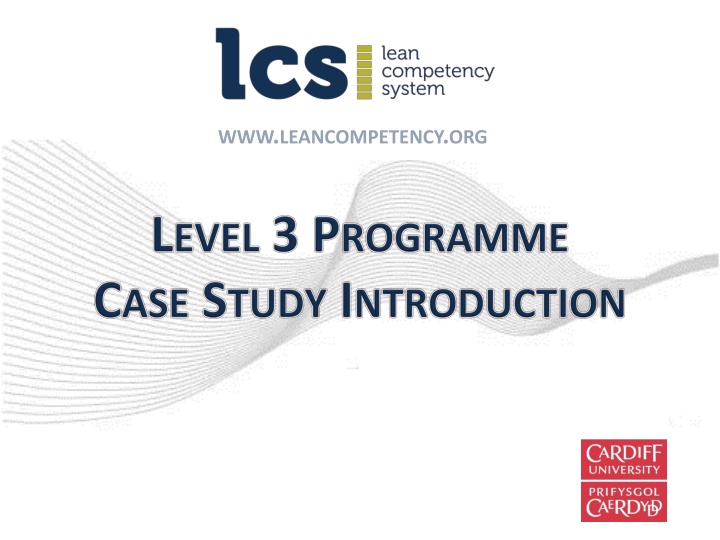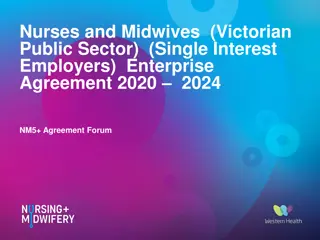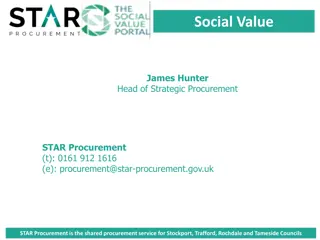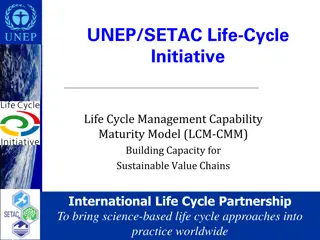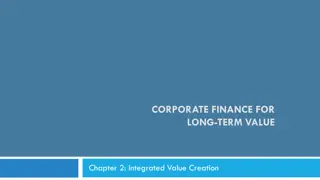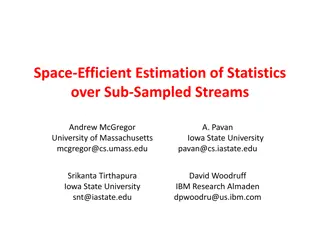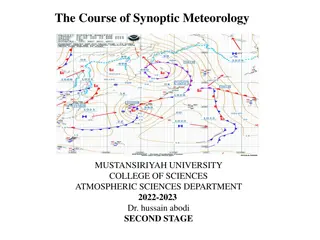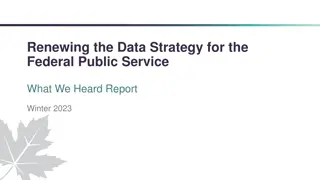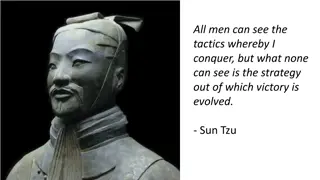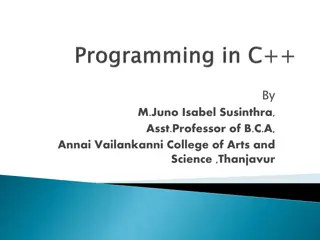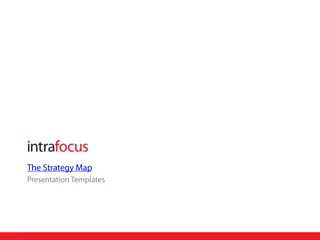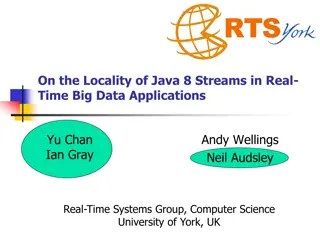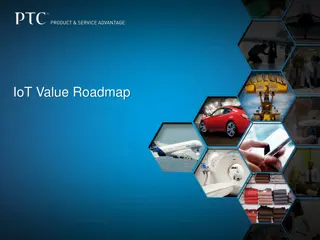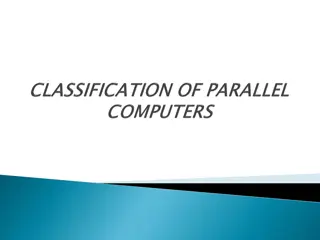Enhancing Value Streams: Case Study Overview and Implementation Strategy
Explore the comprehensive journey of designing, implementing, and sustaining major value stream improvements within organizations. Discover key roles, strategic linkages, and project objectives aligned with Lean principles. Gain insights into achieving efficiency, reducing waste, and enhancing overall quality through practical case studies and valuable resources.
Download Presentation

Please find below an Image/Link to download the presentation.
The content on the website is provided AS IS for your information and personal use only. It may not be sold, licensed, or shared on other websites without obtaining consent from the author.If you encounter any issues during the download, it is possible that the publisher has removed the file from their server.
You are allowed to download the files provided on this website for personal or commercial use, subject to the condition that they are used lawfully. All files are the property of their respective owners.
The content on the website is provided AS IS for your information and personal use only. It may not be sold, licensed, or shared on other websites without obtaining consent from the author.
E N D
Presentation Transcript
Introduction Case study structure Case study assessment Writing the case Support Timetable review next actions Case Study Introduction Session
Case focus: design, implement, sustain major value stream QCD improvements. Organisation, division/dept/group, extd value stream Role: significant involvement in the project s design and development Role: significant management/leadership aspects eg managing people or teams, communication, engagement, planning, control, implementation responsibility etc. The project should have clear strategic linkage aligned to organisational objectives, KPI s and strategy.
The word lean does not have to feature explicitly in the project. If the project aimed to achieve the following (not necessarily all), then it is suitable: Release/create capacity Enhance, add value for customers/stakeholders Reduce waste Improve throughput, flow, compress time Improve quality
Cases introduction Cases introduction Outline proposals Outline proposals Briefing session Briefing session Develop case 1 Develop case 1 Draft submission with Draft submission with feedback feedback Progress review Progress review Case 1 submission Case 1 submission SUPPORTING RESOURCES SUPPORTING RESOURCES Guides, documents on web/cloud Guides, documents on web/cloud Group interaction Group interaction Facilitator advice & feedback Facilitator advice & feedback Case 2, 3 development Case 2, 3 development with feedback with feedback Case Study Introduction Session Cases submitted Cases submitted
Ref: Blooms Taxonomy Case Study Introduction Session
What happened (describe the experience)? Why /how did it happen? What factors contributed? How do you feel about it? What will you do as a result of this experience? How will you use it to inform your future? What is your new interpretation of the experience? What is the significance? What did you learn about yourself and others? See video: https://www.youtube.com/ watch?v=6OLPL5p0fMg Case Study Introduction Session
Typical section guidelines: not prescriptive Executive Summary Aims & Background Description, Method & Role Results & Analysis Conclusions & Sustainability Plan PDCA cycle Act Do Check Case Study Introduction Session
High-level view of the case Explains in a condensed form: The problem that the project intended to solve The desired outcome, key objectives The major considerations The resources required Methods, tools used Key findings, conclusion Presented first but written last
Overall context of the project: eg business need, strategic linkage analysis of the situation, eg how it came about. objectives, preferably quantified (eg QCD), timeline criteria to determine the success of the project Problem statement: an articulation of the problem that the project is supposed to solve, eg areas with issues that need to be addressed. A statement on why the project is lean and why it is strategic
Project description Key stages, milestones, assumptions, dependencies, risks. Role in the project, responsibilities, dates etc Overall approach taken and methodology adopted such as specific models, tools and techniques employed Describe data gathering and analysis undertaken Resources and organisation of the project: people/resources required to implement eg who was involved, other resources used Budget, any financial projections, eg ROI Project management approach adopted
Description of the results, outcomes of the project. This should link back to the objectives/aims and success criteria. Analysis and interpretation of results Methods of evaluation used Solution options identified; cost/benefit analysis Implementation actions description. Issues that arose (resolved or unresolved)
Recommendations made Summary and critical evaluation the overall project experience Impact and benefits (intended or not intended) Outline of the lessons learned (positive and negative) Outline further work required, or the next stages required to continue the improvement into new or related areas Description of the actions or strategy put in place taken to ensure the improvement could be sustained. Sustainability issues
ENDORSEMENT A statement that the report provides an accurate account of what took place and resulted By an appropriate person - eg line manager, customer or project sponsor APPENDICES Supporting information (eg data, charts, images, etc) LENGTH The guideline is 2,500 words, not be seen as prescriptive,. Around 10 pages in length (plus appendices).
Assessment Areas: Aims & Background Description, Method & Role Results & Analysis Conclusions & Sustainability Presentation [Endorsement]
Assessment Criteria 1 2 3 4 Aims and objectives are expressed clearly. The project is strategic in nature. The business context is clear. The project is aligned to business goals. (10% of marks available) Key to Assessment Criteria Rating Scale Key to Assessment Criteria Rating Scale 1. Indicates the statement is true 2. Indicates that the statement is true to some extent 3. Indicates that the statement is not true to some extent 4. Indicates the statement is not true
(25% of marks available) Assessment Criteria 1 2 3 4 Appropriate methodologies and techniques have been used. The project was clearly described and sufficiently detailed The project was well organised. The candidate s role was significant and directional. Advanced lean knowledge has been used in the project.
(25% of marks available) Assessment Criteria 1 2 3 4 Results are described thoroughly and clearly There is discussion on the impact of the results. There is evidence data analysis. The limitations of the results are noted and explored. There is evidence of critical analysis of the results.
(30% of marks available) Assessment Criteria 1 2 3 4 Well thought out conclusions have been made Reference to the original project objectives are made and the degree to which they were met. Comment is made on the implications of the results on future plans and strategy. A statement is made on further work required as a result of the project s findings There is evidence of critical reflection and evaluation on the overall learning gained from the experience. There is understanding of sustainability issues. Sustainability actions have been identified and implemented. The degree of success of sustainability actions has been noted
(10% of marks available) Assessment Criteria 1 2 3 4 The report is well organised and structured. The narrative flows well. The report is well presented The executive summary is succinct, clear and contains all the essential elements.
Analysing the case topic, title What s behind the case? Core theme, storyline Main area(s) of focus Documents, reports, working papers, etc Contact (ex) colleges, project participants On line material options Make notes mind-maps, bulleted lists, post-its etc Obtaining & noting relevant material Work to a defined structure; identify key sections Rough sketch basic plan extended plan evolving plan (outlining, ordering key points) Drawing up the report plan Turn notes, bullet points into paragraphs, narrative Writing the report Ask someone to proof read Read through in one go overall flow, sense check Have a cut off point! Reviewing and redrafting
Narrative flow, Logical structure Analysis: back up with facts Language: succinct minimise padding Conclusion: logical consequence of what has gone before Write in the third person Include charts, diagrams etc Supplementary material in appendices Assignment Writing & Support
Improve writing efficiency Use the Styles feature Especially effective use of Headings Automatically create table of contents Assignment Writing & Support
One-to-one support when producing the elements of the portfolio Drafts reviews should be emailed as MS Word documents, not pdf s to allow use of the MS Word Review feature. Resources on group website Case Study Introduction Session
